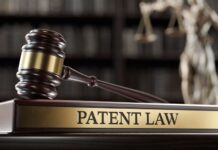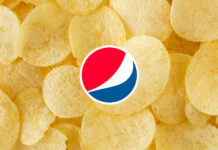
Introduction
Patents are granted for inventions that are new, include an inventive step and are capable of industrial application. An element of human contribution and “inventiveness” are required for patentability. The body of scientific knowledge received by any generation is a combination of invention and discovery, but there is a fine line between the two, and the distinction is not always clear. In this note, we examine the patentability of discoveries in Europe, the United States, and India to understand this distinction in the context of “naturally occurring substances”.
Legal position in Europe, the US and India
Europe
The position with regard to patentability of naturally occurring substances varies across jurisdictions. The Guidelines for Examination issued by the European Patent Office (the ‘EPO’) specify that finding a previously unrecognised substance occurring in nature is mere discovery and therefore unpatentable. However, if a substance found in nature can be shown to produce a technical effect, it may be patentable. As per the Guidelines the following may be patented:
- A substance occurring in nature which is found to have an antibiotic effect.
- A microorganism discovered to exist in nature and to produce an antibiotic.
- A naturally occurring gene having a technical effect, for example, it’s use in making a certain polypeptide or in gene therapy.
US
Until recently, anything under the sun was patentable in the US. However, this position no longer holds true after the Mayo and Myriad decisions. Myriad is of particular relevance for naturally occurring substances. The Supreme Court, in Myriad, held that while claims directed specifically to cDNAs of the BRCA1/2 genes were patentable, claims directed to isolated nucleic acid sequences corresponding to BRCA1/2 gene were products of nature and therefore not eligible for patenting. In order to be eligible for a patent in the US, the substance under consideration is required to be markedly different in terms of structure or function from its naturally occurring counterpart. Thus, minor modifications in structure may make a substance patent-eligible even though the substance is functionally the same as its naturally-occurring equivalent. This suggests that a claim directed to a gene having a nucleic acid sequence, which is modified by substitution at one position relative to its naturally-occurring equivalent, is patent-eligible even though the two are functionally the same. It is important that the claim does not encompass the naturally-occurring equivalent and does not improperly tie-up the future use of naturally occurring substance. The US Patent and Trademarks Office (the ‘USPTO’) has provided examples for subject-matter eligibility analysis of claims directed to nature-based products (See). One of the examples relates to patentability of claims directed to inventions based on Amazonic Acid (AA), which is found in the Amazonian cherry tree. Table 1 summarises the example, and elucidates the treatment of claims relating to naturally-occurring substances at the USPTO:
Table 1: Patentability of Nature-based Product in the US – Examples
| Claim for | Notes/Characteristics | Patentable |
| Purified AA | – There is no indication that purified AA has any characteristics (structural, functional, or otherwise) that are different from naturally occurring AA.
– The claim therefore encompasses AA that is structurally and functionally identical to naturally occurring amazonic acid. |
No |
| Purified 5-methyl AA | – Has a different structural characteristic than amazonic acid.
– The different structural characteristic has resulted in a different functional characteristic. |
Yes |
| Deoxyamazonic acid | – Has a different structural characteristic from amazonic acid.
– The different structural characteristic has not resulted in a different functional characteristic. |
Yes |
| A composition comprising an acid produced by a process which comprises providing AA; and replacing the hydroxyl group of the AA with a hydrogen. | – The acid produced by the claimed process steps is deoxyamazonic acid. (see above for differences). | Yes |
| A pharmaceutical composition comprising: a core comprising AA; and a layer of natural polymeric material enveloping the core. | – The claimed composition is structurally different from the naturally occurring substances. – The structural difference results in the claimed composition having different functional characteristics in vivo. |
Yes |
| A stable aqueous composition comprising: AA; and a solubilizing agent. | – In nature, AA is insoluble in water. – When AA is combined with a solubilizing agent, it becomes soluble in water and forms a stable solution.- Thus, the composition has markedly different characteristics/property. |
Yes |
India
On its part, India holds a strict view when it comes to the patentability of naturally-occurring substances. Section 3(c) of the Indian Patents Act, 1970 (the ‘Act’) excludes from patentability the “discovery of any living thing or non-living substances occurring in nature”. The Indian Patent Office (IPO) interprets the expression ‘occurring in nature’ in the broadest possible manner. Controllers have uniformly held the view that merely because something has been isolated even in a pure form is not sufficient to overcome the rejection under Section 3(c). However, this does not mean that all inventions based on naturally-occurring substances are excluded from patentability.
A product which is structurally and functionally different from its naturally-occurring equivalent may be eligible for a patent. It is required that the structural modification must impart some technical effect or unexpected advantage over the product under consideration. Section 3(d) of the Act particularly requires that, in order to be patentable, a new form of a known substance must exhibit enhanced efficacy. The Supreme Court in Novartis (Civil Appeal No. 2706-2716 of 2013) clarified that in case of therapeutic substances, the term efficacy means ‘therapeutic efficacy’.
A novel, inventive and/or synergistic composition of naturally-occurring substance is also considered eligible for patenting. Thus, merely combining a naturally-occurring substance with other ingredients does not automatically make the resulting composition patentable. For example, a claim for dried powder composition comprising a newly discovered Lactobacillus plantarum strain and a lyophilization protecting agent will be rejected as it is a well-established practice in microbiology to preserve microorganisms by lyophilization and therefore the composition is not inventive.
Similarly, even though a naturally-occurring microbial strain is not patentable, a synergistic novel and inventive consortium of two or more such microorganisms may be patent-eligible. Table 2 provides examples of subject matters that were allowed by the IPO:
Table 2: Examples of Allowable Subject Matter in India (Source: IPO)
| Claim | Notes/Characteristics |
| 8052/DELNP/2011
A refined microbial oil comprising a triglyceride fraction of at least 70%75% to 95% by weight, wherein: – DHA content is at least 40% to 80% by weight, and – DPA n-6 content is at least 0.5% by weight to 6% by weight”. |
– The claimed oil is a refined oil which is different from the crude oil.
– The claimed oil exhibits superior technical effect as it has a high level of DHA and lower level of DPA n-6 relative to DHA. |
| 8680/DELNP/2010
An isolated monovalent fucose-binding peptide derived from Aleuria aurantia lectin (AAL). |
– The naturally occurring AAL is multivalent.
– The claimed peptide does not suffer from the disadvantages associated with the naturally occurring peptide and exhibits improved properties. |
| 1627/DEL/2009
A synergistic insecticidal and larvicidal botanical composition comprising: – plant extract derived from Azadirachtaindica (25% to 75% wt./wt.) – plant extract derived from Prosopis juliflora (25% to 75% wt./wt.) |
– The claimed composition exhibits synergism. |
| 1290/DEL/2010
A formulation of bacterial consortium for degradation of high-density polyethylene comprising: – Microbacterium sp. strain MK3 (DQ 318884); – Pseudomonas putida strain MK4 (DQ 318885); and – Bacterium Te68R strain PN12 (DQ 423487). wherein a single colony from each bacterial strain is inoculated and the culturing continues until an OD of 0.6 is reached at 600 nm and the individual strains of each consortium are mixed at equal proportions of the order of 35 × 105 colony forming units and added into minimal broth Davis medium |
– The claimed consortium is a definite composition of microbes placed in a definite nutrient media devised in order to ensure not only the optimal survival of microbes but also to create bonhomie between bacterial species serving the objective of biodegradation in diverse approaches.
– The composition exhibits synergism. |
| 1271/MUMNP/2010
A tomato fraction for naturally sweetening food products comprising: – tomato sugars as a combined amount of glucose and fructose in said tomato fraction passing through an ultra-filtration membrane having molecular weight cut off 250 kDa and having a) 0-3 ppm lycopene based on wet weight of the tomato fraction; – a w/w ratio of tomato sugars to citric acid of 1:0 to 100:1; and – a w/w ratio of tomato sugars to potassium 1:0 to 200:1. |
– Claimed fraction was derived after several process steps involving human intervention.
– The fraction surprisingly and significantly provides for the desired tomato sugars to serve as a natural sweetener |
| 301/KOL/2015
A sunscreen composition comprising 0.001 to 5 % by weight avobenzone and 0.001 to 5 % by weight Leucas plant extract, wherein the Avobenzone and the Leucas plant extract are in a weight ratio from 1:1 to 1:100.
|
– The composition exhibits synergism. |
| An herbal composition comprising extracts of Cordia lutea, Annona muricata and Curcuma longa, present in a wt. ratio of 1:1:1 to 8:1:1. | – The composition exhibits synergism and superior efficacy. |
Practice Guide – India
While a method for isolation of natural substances may be eligible for patenting, the products per se are not patentable unless structurally and functionally different from their naturally-occurring equivalent. In order to claim a new or artificial form of a naturally-occurring substance, one must also show that the new form exhibits improved efficacy is a vis the naturally-occurring substance to avoid rejection. Given that the IPO appears to have set a higher bar for assessing claims related to naturally-occurring products, it is imperative for applicants to provide sufficient support, such as experimental data to establish technical effect or unexpected advantages. Such support should preferably be in the application itself. Similarly, claims directed to compositions of naturally occurring substances or microorganisms must be supported by experimental data showing synergism.
















